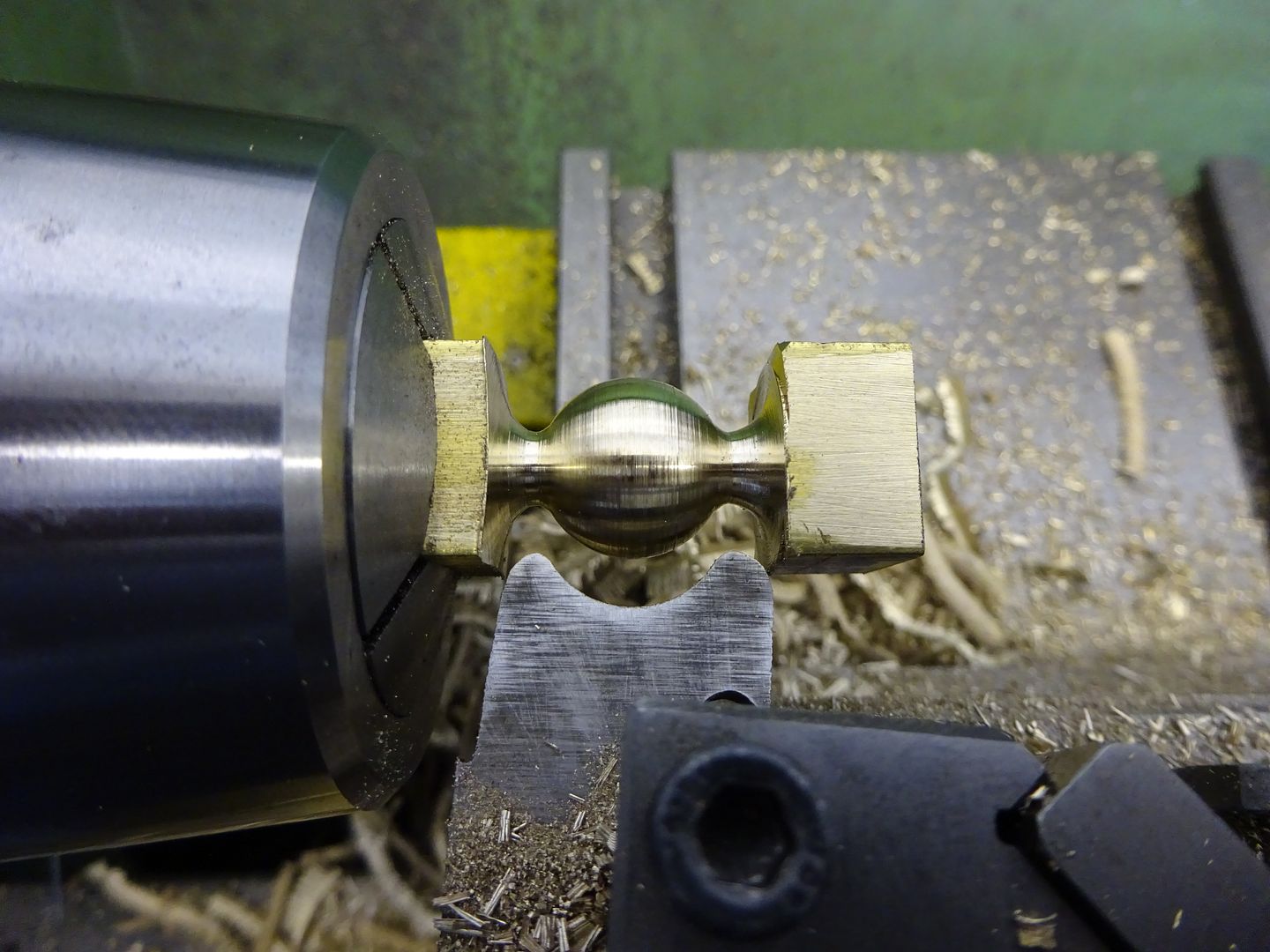Hardening a form tool made from Gauge Plate
| Vic | 15/06/2019 11:43:43 |
| 3453 forum posts 23 photos | Posted by JasonB on 14/06/2019 18:20:27:
I would not bother to temper, just use it hard. Yes I’ve done that with several things I’ve made from 01 and not had any problems. |
| Andrew Johnston | 15/06/2019 13:23:15 |
7061 forum posts 719 photos | I note that a few people don't temper after hardening. That might imply that tempering isn't necessary. But it could also mean that the hardening didn't work properly. In that case tempering will have little or no effect. Andrew |
| JasonB | 15/06/2019 13:32:59 |
25215 forum posts 3105 photos 1 articles | Not sure about tha, this one for expmple held up OK for making these brass fittings
And with a bit of regrinding (not to the cutting edge)went on to cut a batch of steel decorative nuts, still has a sharp edge
If it were not hard I would have expected the steel hex to blunt it. I know the likes of Ramon seldom tempers his homemade cutters and he used to do a lot of hardening for a living though he does have a tub of whale oil to hand.
I do feel that the section of the part being hardened can have an effect, if you have machined the cutting edges then they will be thinner and pointed and will quench faster than the bulk of the part so you can get a harder edge with a less brittle body so the tool may not shatter but the edge could chip. Edited By JasonB on 15/06/2019 13:37:38 |
| Vic | 15/06/2019 14:05:39 |
| 3453 forum posts 23 photos | Posted by Andrew Johnston on 15/06/2019 13:23:15:
But it could also mean that the hardening didn't work properly. In that case tempering will have little or no effect. Andrew And you think we wouldn’t notice?! In my case at least all the parts ended up glass hard as determined by a file just skidding over the surface. I’ve made trigger parts and scraper tips and they’ve all worked very well. |
| Vic | 15/06/2019 14:06:57 |
| 3453 forum posts 23 photos | Nice Nuts Jason! |
| Neil Wyatt | 15/06/2019 18:17:05 |
19226 forum posts 749 photos 86 articles | Posted by JasonB on 15/06/2019 13:32:59:
I do feel that the section of the part being hardened can have an effect, if you have machined the cutting edges then they will be thinner and pointed and will quench faster than the bulk of the part so you can get a harder edge with a less brittle body so the tool may not shatter but the edge could chip. Edited By JasonB on 15/06/2019 13:37:38 If you do it properly and oil quench it's a gentler process as well and more likely to leave the core a bit softer. Neil |
| Michael Gilligan | 15/06/2019 22:36:05 |
23121 forum posts 1360 photos | A couple of useful notes here: https://www.westyorkssteel.com/files/gauge-plate-ground-flat-stock.pdf http://www.m-machine-metals.co.uk/info_heatreatment.html MichaelG.
|
| JasonB | 16/06/2019 06:58:08 |
25215 forum posts 3105 photos 1 articles | Strange that the M-machine link says that bright rid is colder than cherry red, I would have said 500degC was cherry red and 8-900degC bright red. |
| Michael Gilligan | 16/06/2019 13:46:27 |
23121 forum posts 1360 photos | Well spotted, Jason ... I wonder if it was a typo for 'black red' MichaelG. |
Please login to post a reply.
Want the latest issue of Model Engineer or Model Engineers' Workshop? Use our magazine locator links to find your nearest stockist!
Sign up to our newsletter and get a free digital issue.
You can unsubscribe at anytime. View our privacy policy at www.mortons.co.uk/privacy
- hemingway ball turner
04/07/2025 14:40:26 - *Oct 2023: FORUM MIGRATION TIMELINE*
05/10/2023 07:57:11 - Making ER11 collet chuck
05/10/2023 07:56:24 - What did you do today? 2023
05/10/2023 07:25:01 - Orrery
05/10/2023 06:00:41 - Wera hand-tools
05/10/2023 05:47:07 - New member
05/10/2023 04:40:11 - Problems with external pot on at1 vfd
05/10/2023 00:06:32 - Drain plug
04/10/2023 23:36:17 - digi phase converter for 10 machines.....
04/10/2023 23:13:48 - More Latest Posts...
- View All Topics
- Reeves** - Rebuilt Royal Scot by Martin Evans
by John Broughton
£300.00 - BRITANNIA 5" GAUGE James Perrier
by Jon Seabright 1
£2,500.00 - Drill Grinder - for restoration
by Nigel Graham 2
£0.00 - WARCO WM18 MILLING MACHINE
by Alex Chudley
£1,200.00 - MYFORD SUPER 7 LATHE
by Alex Chudley
£2,000.00 - More "For Sale" Ads...
- D1-3 backplate
by Michael Horley
Price Not Specified - fixed steady for a Colchester bantam mark1 800
by George Jervis
Price Not Specified - lbsc pansy
by JACK SIDEBOTHAM
Price Not Specified - Pratt Burnerd multifit chuck key.
by Tim Riome
Price Not Specified - BANDSAW BLADE WELDER
by HUGH
Price Not Specified - More "Wanted" Ads...
Do you want to contact the Model Engineer and Model Engineers' Workshop team?
You can contact us by phone, mail or email about the magazines including becoming a contributor, submitting reader's letters or making queries about articles. You can also get in touch about this website, advertising or other general issues.
Click THIS LINK for full contact details.
For subscription issues please see THIS LINK.
Model Engineer Magazine
- Percival Marshall
- M.E. History
- LittleLEC
- M.E. Clock
ME Workshop
- An Adcock
- & Shipley
- Horizontal
- Mill
Subscribe Now
- Great savings
- Delivered to your door
Pre-order your copy!
- Delivered to your doorstep!
- Free UK delivery!












 Register
Register Log-in
Log-in


